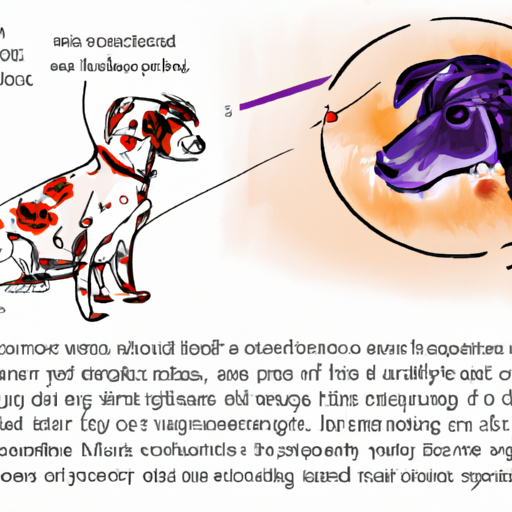Hot spots, or acute moist dermatitis, are areas of skin inflammation and bacterial infection that can cause a great deal of discomfort for your beloved canine companion. These irritated patches can appear suddenly and rapidly worsen, making prompt and effective treatment crucial.
Table of Contents
- Understanding Hot Spots on Dogs
- Causes of Hot Spots
- Symptoms of Hot Spots
- How to Treat Hot Spots at Home
- When to See a Veterinarian
- Preventing Hot Spots in Dogs
- Frequently Asked Questions
Key Takeaways
- Hot spots are a common skin condition in dogs, characterized by red, inflamed, and often infected patches of skin.
- They can be caused by a number of factors, including allergies, insect bites, and excessive scratching or licking.
- Treatment at home can be effective, but severe or persistent hot spots may require veterinary attention.
- Preventative measures, such as regular grooming and maintaining a healthy diet, can help reduce the risk of hot spots.
Understanding Hot Spots on Dogs
Hot spots are red, wet, irritated areas of skin that are frequently seen in dogs. They can appear anywhere on the body, but are most common on the head, hips, and limbs. These inflamed patches are often very itchy and painful, leading dogs to chew, lick, or scratch at the area, which only worsens the condition.
Causes of Hot Spots
Hot spots can be triggered by a variety of factors. Anything that causes your dog to scratch or irritate their skin can lead to the development of hot spots. This can include allergies, flea or insect bites, poor grooming, skin infections, or even just boredom or stress. Certain breeds, such as Golden Retrievers and St. Bernards, are more susceptible to hot spots due to their thick coats.
Symptoms of Hot Spots
If your dog has a hot spot, you may notice a red, swollen area of skin that feels warm to the touch. This area may be moist, oozing, and may have a foul smell. Other signs include hair loss around the area, constant scratching or licking, and evident discomfort or pain.
How to Treat Hot Spots at Home
If you catch a hot spot early, you may be able to treat it at home. Here are some steps^(1^) you can take to alleviate the discomfort and help your dog heal:
- Clip the Hair: Trim the hair around the hot spot to prevent further irritation and to allow the area to dry out.
- Clean the Area: Use a mild antiseptic to clean the area and gently pat it dry.
- Apply a Topical Treatment: Apply an over-the-counter hot spot treatment or hydrocortisone cream to soothe the inflammation and itchiness. It’s important to prevent your dog from licking or chewing the affected area while it heals.
- Use an E-Collar: If your dog can’t stop licking or chewing the spot, consider using an Elizabethan collar to prevent further damage.
Regular grooming can greatly assist in preventing the occurrence of hot spots^(2^). With regular grooming, you can detect early signs of skin irritation and take necessary action before it escalates into a hot spot.
When to See a Veterinarian
While some hot spots can be managed at home, others require veterinary attention. If your dog’s hot spot is particularly large, painful, or seems to be getting worse despite home treatment, you should take your dog to the vet. Your vet might prescribe antibiotics, topical medications, or a special shampoo to treat the hot spot. They can also investigate the underlying cause of the hot spots and suggest ways to prevent them in the future.
Preventing Hot Spots in Dogs
Preventing hot spots involves addressing the underlying causes. Regular grooming, a healthy diet, flea and tick prevention, and plenty of physical and mental stimulation can all help to prevent hot spots. It’s also important to pay attention to your dog’s behavior. Excessive licking or scratching can be a sign of discomfort and should be addressed promptly.
Frequently Asked Questions
Q: Are hot spots contagious to other dogs or humans?
A: No, hot spots are not contagious. They are a localized skin infection and cannot be transmitted to other dogs or humans.
Q: Can hot spots spread on the same dog?
A: Yes, if left untreated, hot spots can spread on the same dog. The bacteria can spread to other areas of skin if the dog continues to scratch or lick the infected area.
Q: How long does it take for a hot spot to heal?
A: With appropriate treatment, most hot spots will start to improve within a few days and should heal completely within a week or two.
Q: How can I soothe my dog’s hot spot?
A: Applying a cool compress to the area or using an over-the-counter hot spot treatment can help to soothe your dog’s hot spot. It’s also important to prevent your dog from licking or scratching the area while it heals.
Remember, if you notice persistent or severe hot spots, it’s always best to seek veterinary attention. Taking care of your dog’s skin health is a vital part of their overall wellbeing^(3^).



